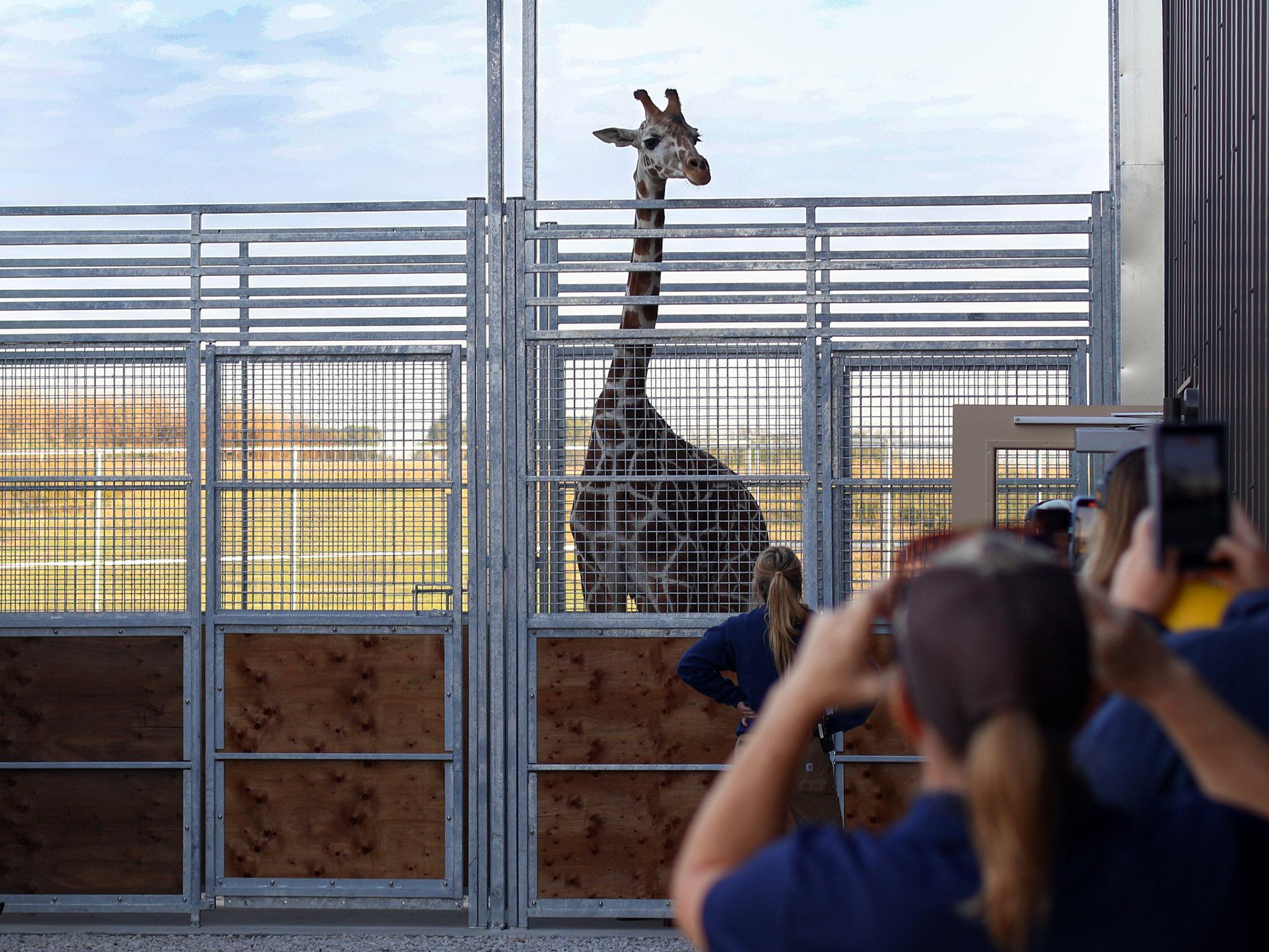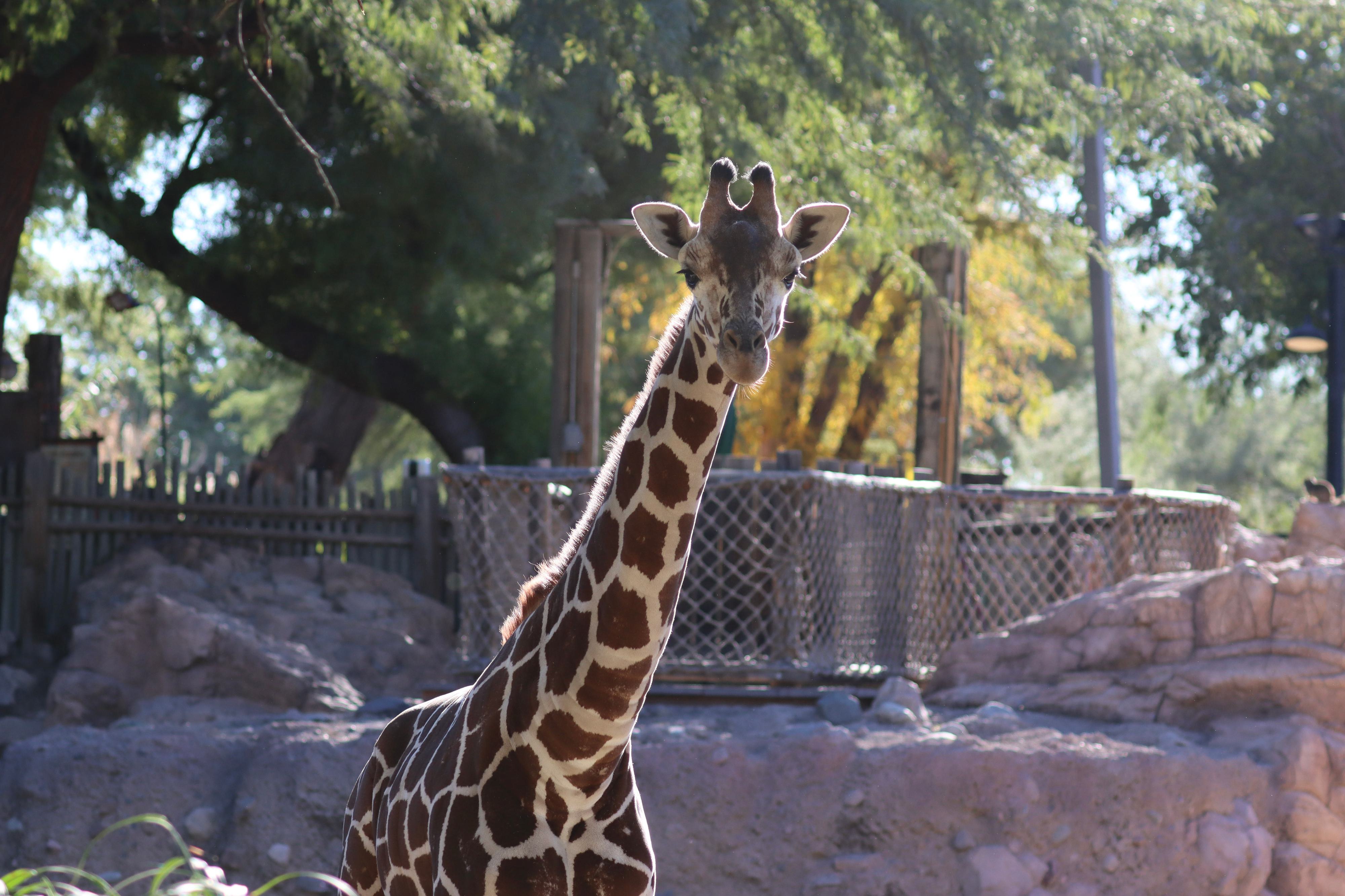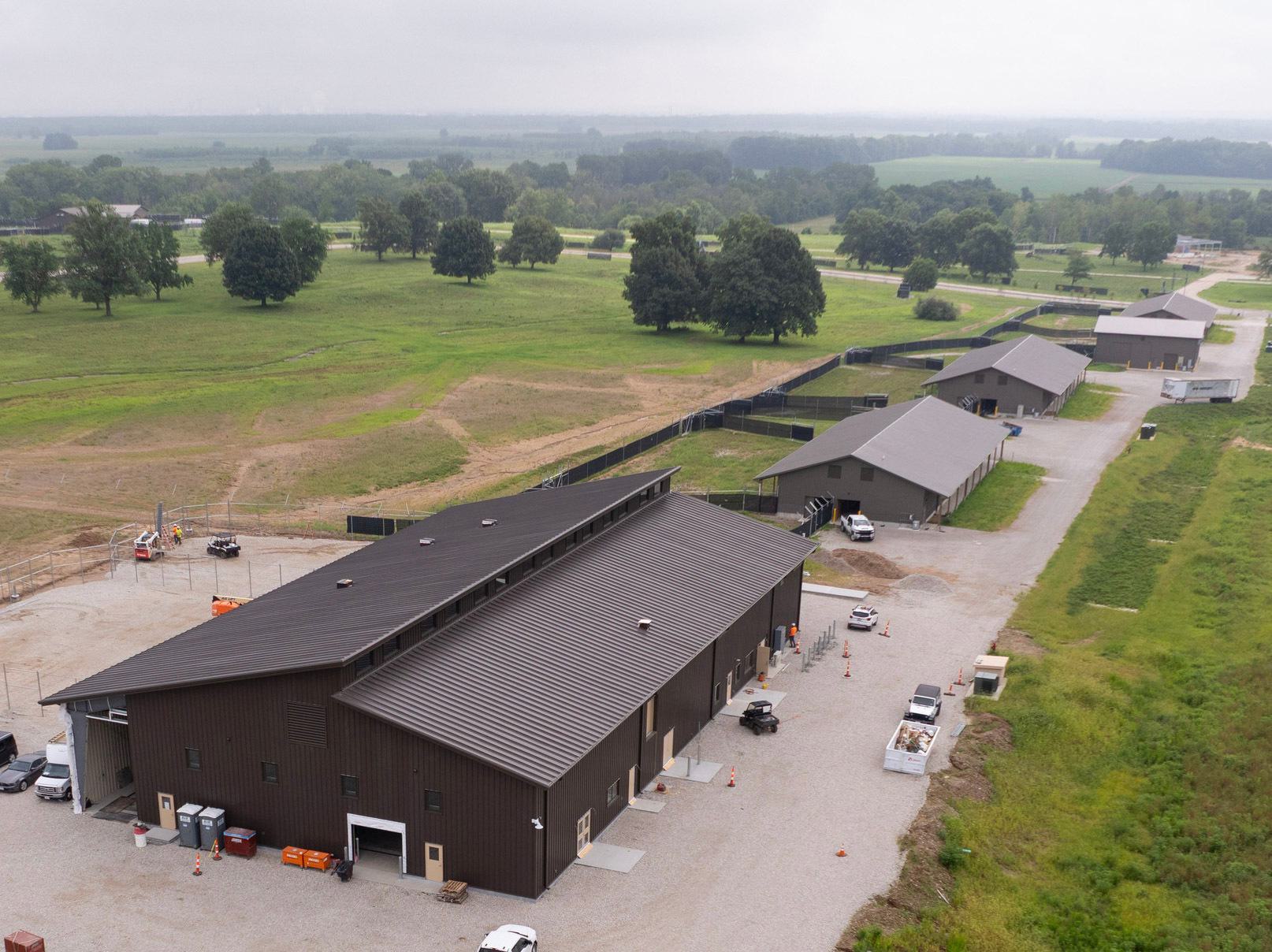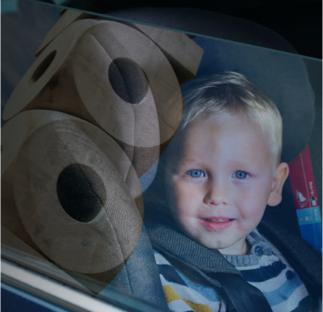Saint Louis Zoo WildCare Park welcomed its first two resident giraffes this month at the Zoo's new safari park and conservation center coming to north St. Louis County in 2027.
Mo, a 21-month-old male reticulated giraffe from Reid Park Zoo in Tucson, Arizona, arrived on Oct. 11. A few days later, Daniel, a 20-month-old reticulated giraffe from The Living Desert Zoo and Gardens in California, joined him. Not yet fully grown, the young giraffes today stand at 11 and 13 feet tall.
Both giraffes are settling in well as the first residents of WildCare Park’s state-of-the-art, 38.5-foot-tall giraffe barn. Several more giraffes are expected to move into their new home at the park within the next year with as many as 10 to 15 living at WildCare Park by the 2027 opening.

“Giraffes will be some of WildCare Park’s largest and most iconic species,” said Martha Fischer, general curator at WildCare Park. “As our herd grows, I know the sight of a dozen or more of these remarkable animals roaming the landscape will be unforgettable for guests.”
The first giraffes’ arrival follows the recent introduction of a five-member southern white rhino herd to WildCare Park in September, another important milestone as the safari park continues to take shape.
All moves were recommended by the Association of Zoos & Aquariums Species Survival Plan (SSP), a collaborative breeding program among accredited North American zoos. The SSP is dedicated to creating a genetically healthy population of animals in human care to serve as a safety net against extinction.
Giraffes will also continue to live at the Saint Louis Zoo in Forest Park.

The Savanna Safari and giraffe barn
The WildCare Park giraffes will spend most of their time in the 101-acre Savanna Safari pasture, one of many habitats within the park’s 425 acres located near the confluence of the Mississippi and Missouri rivers.
Guided safari truck tours will take guests into this habitat of native plants dotted with five small lakes where they will be able to view the giraffe herd with no barriers. The giraffes will share the habitat with several other species including Grevy’s zebra, wild cattle (banteng,) ostrich and several rare antelope species (scimitar-horned oryx, greater kudu, waterbuck and Nile lechwe).
The Savanna Safari will be one of two guided safari truck experiences at WildCare Park. The second, the Woodland Safari, will take guests through 63 acres that will be home to a herd of southern white rhinoceros along with about 30 other animals.
The WildCare Park giraffes will also have access to shelter in the park’s new, 22,000-square-foot giraffe barn. This heated building includes tall, skinny doors specially designed for a giraffe’s unique height, large community stalls and a second-floor walkway, putting keepers nearly head-height with the herd. Natural substrate on the floors will benefit the herd’s hooves and suspended feeders allow the giraffes to mimic munching or “browsing” from trees like they do in the wild.

The barn also includes windows for natural light, a food prep room featuring a large freezer for the giraffes’ greenery snacks and a keeper hub with a break room and workstations for the animal care team.
Giraffe conservation
Giraffes are the tallest living land animal in the world. Adult males typically grow to 16 to 18 feet tall, while females are somewhat smaller at 14 to 16 feet. Due to their height, their competition for food is minimal in the savannas of Eastern Africa.
Giraffes are facing significant conservation challenges, with several subspecies classified as vulnerable or endangered. Wild giraffe populations have declined by about 40% over the past three decades, dropping to fewer than 120,000 today, according to the IUCN Red List of Threatened Species.
All giraffe species remain threatened by drought, hunting and habitat loss.
The Saint Louis Zoo supports community-based conservation of giraffes and their savanna habitats through the Saint Louis Zoo WildCare Institute Center for Conservation in the Horn of Africa.
Saint Louis Zoo WildCare Park
WildCare Park features two different, but complementary components. The first is what the public will experience: An outdoor adventure that guides guests on a safari through herds of animals roaming wild across meadows and forests. The second is the Kent Family Conservation and Animal Science Center, a dedicated conservation breeding facility. This area will not be open to the public and is focused on sustaining endangered and threatened species.
Today, WildCare Park is home to 75 animals including some of the most endangered species in the world. Herds at WildCare Park include southern white rhinos, Bactrian camels, wild cattle, wild horses and several antelope species with many more animals on the way. Sixteen births have already been celebrated at WildCare Park, including endangered Grevy’s zebra, addax, scimitar-horned oryx and banteng.
WildCare Park will be home to more than 200 adult animals when it opens to the public in 2027. For more information on WildCare Park, visit stlzoo.org/wildcarepark.

